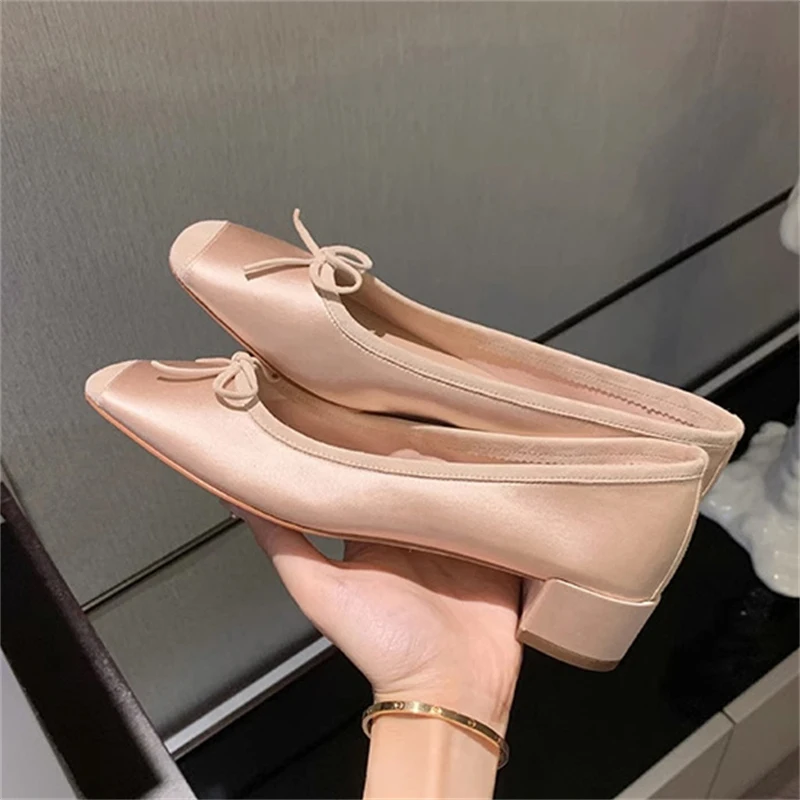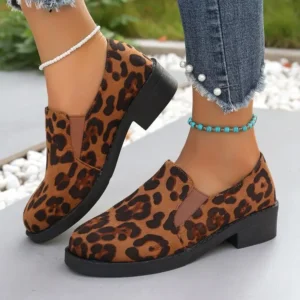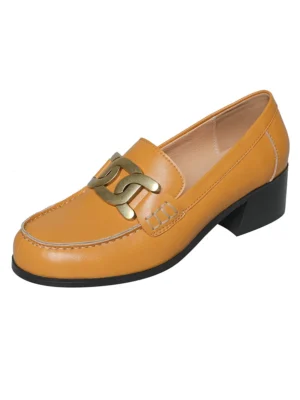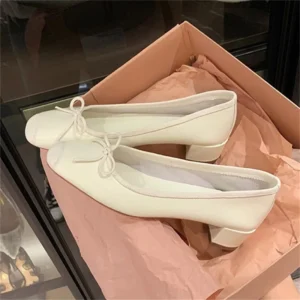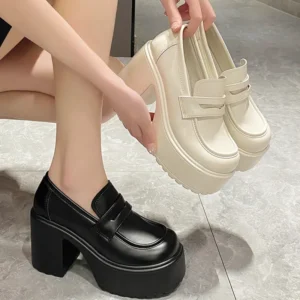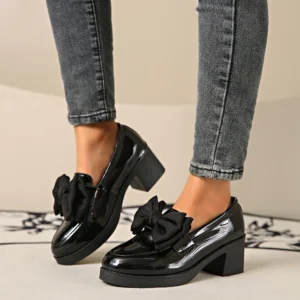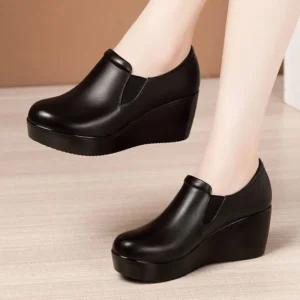Understanding the Appeal: Wedge Heel Loafers for Style and Support
Wedge heel loafers represent the perfect marriage of fashion and function in the footwear world. These versatile shoes combine the classic, sophisticated silhouette of traditional loafers with a continuous wedge heel that runs from toe to heel. Unlike conventional heeled shoes where the heel portion stands separate from the sole, wedge loafers feature a solid, uninterrupted platform that creates both elevation and support.
The growing demand for these stylish yet practical shoes reflects a broader shift in fashion priorities. Today’s consumers increasingly seek footwear that doesn’t force them to choose between looking good and feeling comfortable. This evolution has transformed what was once considered purely “orthopedic footwear” into fashionable options that can complement professional office loafer outfits without sacrificing comfort.
What makes wedge heel loafers particularly noteworthy is how their construction fundamentally differs from traditional heels. Rather than concentrating pressure on specific points of the foot, the continuous sole creates a more balanced foundation. This unique design raises an important question: how exactly do wedge heel loafers benefit foot health beyond just looking stylish?
For those seeking the perfect blend of style and support, exploring quality women’s wedge heel loafers reveals how thoughtful design can address common foot concerns while maintaining fashion-forward appeal.
The Anatomy of Orthopedic Wedge Heel Loafers
Understanding the structural elements of wedge heel loafers helps explain their orthopedic advantages. The defining feature—the continuous wedge sole—creates a biomechanical advantage by supporting the foot throughout its entire length, unlike traditional heels that leave a gap between the ball and heel of the foot.
The optimal heel height for orthopedic wedge loafers typically ranges between 1.5 to 2.5 inches (3.8 to 6.3 cm). This moderate elevation provides enough lift to shift weight distribution advantageously without creating excessive pressure on the forefoot. This sweet spot offers maximum comfort while still providing an elegant silhouette.
Quality orthopedic wedge loafers incorporate several essential design elements:
- Contoured footbeds that follow the natural arch shape of the foot
- Cushioned insoles made from materials like memory foam or latex
- Wider toe boxes that prevent crowding and compression of toes
- Shock-absorbing midsoles to reduce impact forces during walking
These supportive shoes often feature materials specifically chosen for their comfort properties. Cork provides natural cushioning and gradually molds to the wearer’s foot. EVA (ethylene vinyl acetate) delivers lightweight shock absorption. Memory foam contours to individual foot shape while providing pressure relief.
The relationship between foot health and wedge heel loafers is particularly significant because all these elements work in concert. The contoured footbed supports the arch, the cushioned materials absorb impact, and the continuous wedge distributes pressure—creating a comprehensive approach to foot support that’s vastly different from both flat shoes and high heels.
Essential Orthopedic Benefits of Wedge Heel Loafers
Wedge heel loafers offer five primary orthopedic advantages that contribute to overall foot comfort and health. These benefits work together to create footwear that supports not just your feet, but your entire body alignment. With foot problems affecting approximately 75% of adults at some point in their lives, the design elements in wedge loafers address many common concerns while maintaining style.
The following sections explore each benefit in detail, showing how the unique construction of wedge loafers contributes to healthier, more comfortable feet.
Improved Weight Distribution and Pressure Relief
One of the most significant orthopedic advantages of wedge heel loafers comes from how they distribute body weight across the foot. Unlike traditional heels that concentrate pressure primarily on the ball of the foot and the heel, wedge loafers spread weight more evenly from toe to heel.
This balanced weight distribution creates measurable benefits. Pressure mapping studies have shown that wedge designs can reduce forefoot pressure by up to 30% compared to similar height conventional heels. This makes a substantial difference for people who experience pain in the ball of the foot (metatarsalgia) or those with Morton’s neuroma—a painful condition affecting the nerves between the toes.
The continuous sole of wedge loafers plays a crucial role in dissipating impact forces during walking. Each step generates forces that travel up through the feet, legs, and spine. By spreading these forces across a larger surface area, wedge loafers reduce the intensity of impact at any single point. This results in less pressure on sensitive areas and greater overall comfort during extended wear.
This more balanced distribution of weight sets the foundation for the next key benefit: enhanced stability.
Enhanced Stability and Balance
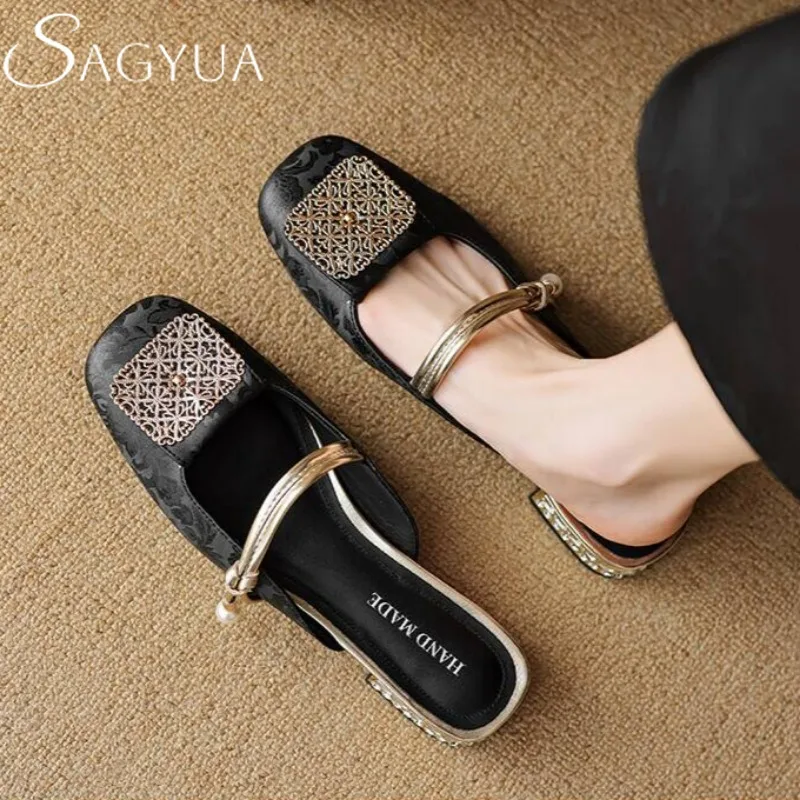
Stability represents another major advantage of wedge heel loafers over traditional heeled shoes. The broader base of support created by the wedge design significantly increases stability by providing more contact with the ground—often up to 40% more surface area than a comparable traditional heel.
This expanded ground contact substantially reduces the risk of ankle rolling or twisting, making wedge loafers an excellent option for those with balance concerns or previous ankle injuries. Studies have shown that wedge constructions are associated with fewer lateral ankle injuries compared to conventional heels of similar height.
The benefits of why choose wedge heel loafers become particularly apparent during activities that require prolonged standing or walking. The increased stability reduces the constant micro-adjustments your foot and ankle muscles must make to maintain balance in less stable shoes. This translates to reduced muscle fatigue at the end of a long day—a welcome benefit for anyone who spends significant time on their feet.
This solid foundation of stability creates the perfect conditions for proper foot alignment and support.
Superior Arch and Heel Support
Wedge heel loafers excel at providing integrated arch support—a feature that’s fundamental to overall foot health. The continuous nature of the wedge allows for a contoured footbed that follows and supports the natural arch of the foot. This support is critical since the arch acts as a natural shock absorber and helps distribute weight across the foot.
Different arch types require different levels of support. High arches benefit from cushioned support that helps with shock absorption. Normal arches need moderate, balanced support. Low arches or flat feet require firmer support to prevent overpronation (excessive inward rolling). Quality wedge loafers often feature arch support that accommodates these varying needs.
The heel cradle design commonly found in orthopedic wedge loafers helps stabilize the rearfoot, keeping it properly aligned. This stability prevents excessive inward (pronation) or outward (supination) movement of the foot during walking. For those suffering from plantar fasciitis—inflammation of the band of tissue connecting the heel bone to the toes—this rearfoot control can provide significant relief by reducing strain on the plantar fascia.
Many women’s heeled loafers now incorporate these supportive features while maintaining stylish designs, making it easier to prioritize foot health without sacrificing fashion.
Effective Shock Absorption
Every step we take creates impact forces that travel through our feet and up through our bodies. Wedge heel loafers typically incorporate materials specifically designed to absorb these forces, protecting not only the feet but also the knees, hips, and lower back.
Materials like EVA (ethylene vinyl acetate), cork, and rubber in wedge constructions act as natural shock absorbers. These materials compress slightly with each step, dissipating impact forces before they can travel up the skeletal system. In contrast, rigid-soled shoes transfer much more of this impact directly to the joints.
The shock absorption benefits extend beyond immediate comfort. Over time, reduced impact stress means less cumulative wear on joints throughout the body. Research suggests that proper shock absorption in footwear can reduce pressure on knee joints by up to 15%, which is particularly beneficial for those with existing joint concerns.
For anyone experiencing knee, hip, or lower back discomfort, the shock-absorbing properties of well-designed wedge loafers can provide noticeable relief while supporting proper alignment throughout the body.
Improved Posture and Alignment
The moderate heel height typical of wedge loafers positions the foot at a biomechanically advantageous angle that can positively affect posture throughout the entire body. This slight elevation of the heel relative to the forefoot creates a more balanced position for the ankle and optimizes calf muscle engagement without creating excessive tension.
This improved foot positioning creates a domino effect of alignment benefits up the kinetic chain:
– Ankles maintain a more neutral position
– Knees align more directly over the feet
– Hips square more naturally
– Spine maintains more natural curves
Compared to completely flat shoes (which can cause excessive pressure on the heel) or high heels (which dramatically tilt the pelvis forward), the moderate 1.5-2.5 inch height of most wedge loafers represents an optimal middle ground for alignment.
The continuous support from heel to toe helps maintain this alignment during movement, reducing the muscular effort required to maintain proper posture. This means less fatigue at the end of the day and potentially fewer posture-related aches and pains over time.
Therapeutic Benefits for Common Foot Conditions
Beyond general comfort and support, wedge heel loafers offer specific benefits for many common foot conditions. Understanding how to wear loafers to the office comfortably becomes even more important for those managing foot conditions during long workdays.
For plantar fasciitis sufferers, the combination of arch support and heel cushioning in wedge loafers helps reduce strain on the inflamed plantar fascia tissue. The slight heel elevation also decreases tension on the Achilles tendon, which connects to the plantar fascia.
Those with bunions or hammertoes benefit from the wider toe box often found in orthopedic-focused wedge loafers. This additional space prevents painful pressure on these deformities while the even weight distribution reduces force on the affected joints.
Metatarsalgia (ball-of-foot pain) finds relief through the pressure redistribution provided by wedge construction. Rather than concentrating force on the metatarsal heads as traditional heels do, wedges spread weight more evenly, reducing painful pressure points.
People with flat feet particularly benefit from the built-in arch support that wedge loafers can provide. This support helps prevent overpronation (excessive inward rolling) and provides the stability that flat feet often lack.
For those with mild arthritis in the feet, the shock-absorbing properties of wedge loafers reduce impact forces that can aggravate joint pain. The stable platform also minimizes unnecessary joint movement that might cause discomfort.
Heel pain sufferers, including those with heel spurs, find that the cushioning and slight elevation provided by wedge loafers reduces direct pressure on sensitive areas while promoting better weight distribution throughout the foot.
Finding Your Perfect Pair: Essential Features to Look For
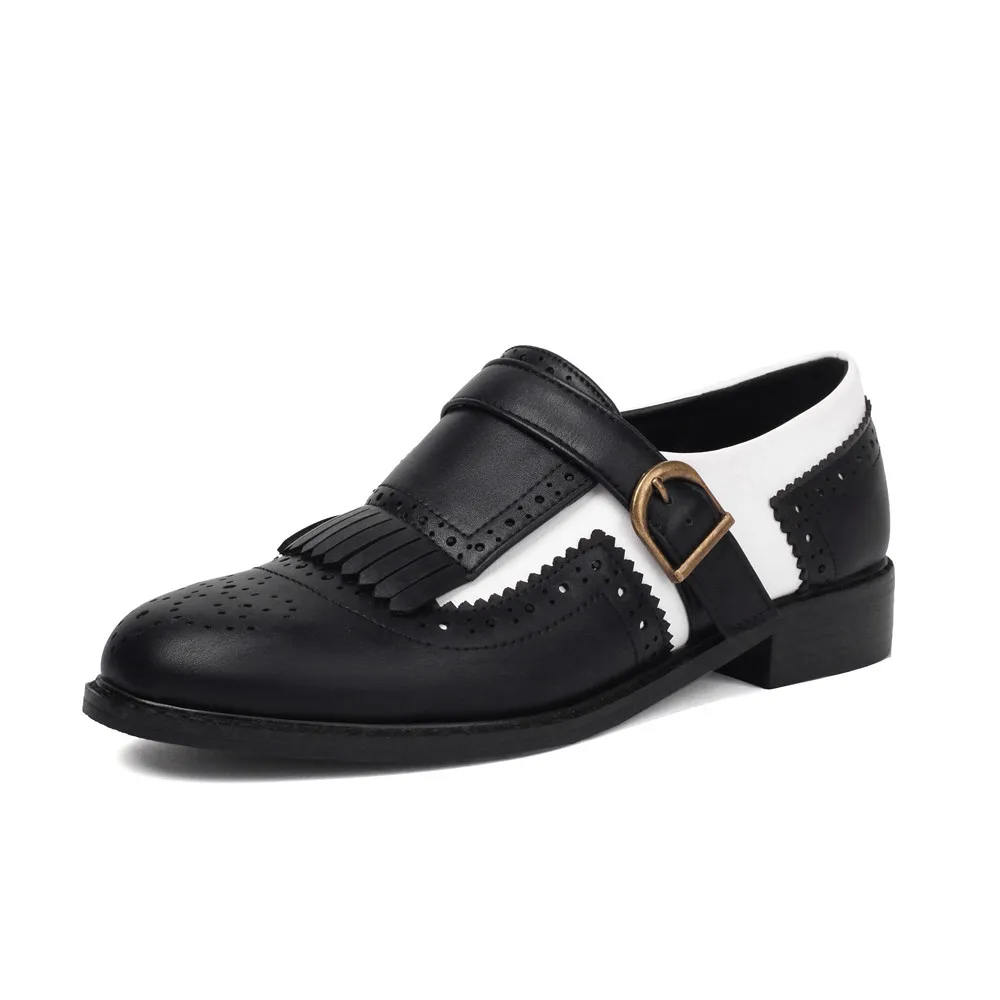
Selecting the right wedge heel loafers starts with proper sizing and fit—the foundation of any orthopedic benefit. Shoes that are too tight compress the foot, while those too loose allow excessive movement that can lead to friction and instability.
When evaluating wedge loafers for orthopedic benefits, look for these key features:
- Contoured footbed that follows the natural shape of the foot
- Adequate cushioning that compresses slightly but returns to shape
- Arch support appropriate for your specific arch type
- Toe box wide enough to allow toes to spread naturally
- Heel cup that cradles and stabilizes the rearfoot
- Flexible forefoot that allows natural toe bending
- Breathable materials that prevent moisture buildup
- Non-slip outsole that provides secure traction
Material quality significantly impacts both comfort and support. Look for premium leathers that conform to the foot shape over time, moisture-wicking linings that keep feet dry, and resilient sole materials that maintain their supportive properties with extended wear.
For maximum versatility, consider wedge loafers with removable insoles. This feature allows for the insertion of custom orthotics if needed, effectively combining personalized orthopedic support with the style of women’s square heel loafers or wedge designs.
When trying on potential pairs, walk on both hard and soft surfaces to assess comfort and stability. Pay attention to any pressure points or areas of discomfort, as these typically won’t improve with wear and may indicate a poor fit for your foot shape.
Wedge Heel Loafers vs. Alternative Footwear: A Comparative Analysis
Understanding how wedge heel loafers compare to other footwear options helps highlight their unique position in balancing style with orthopedic benefits.
| Feature | Wedge Heel Loafers | Traditional High Heels | Flat Loafers | Platform Shoes |
|---|---|---|---|---|
| Weight Distribution | Even across foot | Concentrated on ball of foot | Even but without arch support | Even but heavier overall |
| Stability | High | Low | Moderate | Moderate to low |
| Arch Support | Moderate to high | Low | Low to none | Low to moderate |
| Shock Absorption | Good | Poor | Variable | Variable |
| Impact on Posture | Balanced alignment | Forward tilt | May lack support | Similar to wedges but bulkier |
| Style Versatility | Business to casual | Formal to party | Casual to business casual | Casual to trendy |
The comparison between loafers and heels for professional footwear reveals that wedge loafers offer a unique combination of benefits. While traditional high heels may provide more dramatic leg-lengthening effects, they significantly sacrifice comfort and can lead to foot problems with regular wear. Flat loafers offer comfort but may lack the support and elevation that benefit many foot types. Platform shoes provide height similar to wedges but are often heavier and less flexible.
For everyday office wear, wedge heel loafers strike an optimal balance. They provide the professional appearance and moderate height of heels with support closer to comfort-focused footwear. For special occasions where style is the priority, traditional heels might be preferred for limited wear. For weekend casual wear, flat loafers might be sufficient for those without specific foot concerns.
Professional Perspectives: What Foot Specialists Say About Wedge Heel Loafers
Foot health professionals generally view wedge heel loafers favorably compared to other heeled options. Podiatrists typically recommend keeping heel heights under 2 inches for daily wear—a range that many wedge loafers fall within comfortably.
Foot specialists particularly appreciate several aspects of wedge design:
- The continuous sole that provides better weight distribution
- The stability that reduces ankle injuries and improves balance
- The potential for incorporating proper arch support into the design
- The moderate height that doesn’t dramatically alter gait mechanics
Many podiatrists recommend wedge styles for patients transitioning away from higher heels or for those who need some heel height for fashion or professional purposes but experience pain in traditional heels. They’re often suggested for patients with mild to moderate foot conditions who don’t require specialized orthopedic footwear but benefit from additional support.
However, foot specialists also note important limitations. Wedge loafers aren’t typically recommended for severe foot deformities or acute injuries that require more specialized orthopedic shoes. They also caution that not all wedge loafers offer adequate support—quality and design matter significantly.
From a professional perspective, wedge heel loafers make the most sense as part of a varied footwear rotation. Alternating between different women’s block heel loafers and other supportive styles prevents overuse patterns and allows muscles to work in slightly different ways, promoting overall foot health.
Women's Comfortable Flat Loafers, Women's Leopard Print Loafers, Women's Low Heel Loafers
$82.50 Select options This product has multiple variants. The options may be chosen on the product pageWomen's Block Heel Loafers, Women's Heeled Penny Loafers, Women's Monk Strap Loafers
$194.04 Select options This product has multiple variants. The options may be chosen on the product pageWomen's Block Heel Loafers, Women's Square Heel Loafers, Women's Square Toe Flat Loafers
Price range: $73.61 through $86.41 Select options This product has multiple variants. The options may be chosen on the product pageWomen's Black Platform Loafers, Women's High Heel Loafers, Women's High Platform Loafers, Women's White Platform Loafers
$106.67 Select options This product has multiple variants. The options may be chosen on the product pageWomen's Black Heeled Loafers, Women's Black Platform Loafers, Women's Block Heel Loafers, Women's Chunky Heel Loafers
$72.58 Select options This product has multiple variants. The options may be chosen on the product pageWomen's High Platform Loafers, Women's Wedge Heel Loafers
$171.07 Select options This product has multiple variants. The options may be chosen on the product page
Maximizing Comfort: Wear and Care Tips for Orthopedic Wedge Loafers
To get the most from your wedge heel loafers, follow these practices to maintain their orthopedic benefits:
Break in gradually: Wear new wedge loafers for 2-3 hours initially, gradually increasing wearing time over 1-2 weeks. This allows both the shoes to conform to your feet and your feet to adjust to the new support pattern.
Alternate your footwear: Even the most supportive shoes benefit from rotation. Alternating between different pairs allows shoes to fully dry out between wearings and prevents your feet from adapting too much to a single support pattern.
Use protective sprays: Apply appropriate leather or fabric protectors to guard against moisture damage that can compromise support structures.
Clean regularly: Wipe shoes with appropriate cleaners to remove dirt and salt that can break down materials over time. Pay special attention to the footbed, which can harbor bacteria.
Check for wear patterns: Regularly inspect soles for uneven wear, which may indicate it’s time for replacement or that you might benefit from custom orthotics.
Resole when necessary: Quality wedge loafers can often be resoled when the bottom wears out, preserving the upper and the contoured footbed that has molded to your foot.
Store properly: Use shoe trees or stuff with paper to maintain shape, and store away from direct heat or sunlight which can degrade materials.
Generally, even well-made orthopedic wedge loafers should be evaluated for replacement after 300-500 miles of walking or when visible compression of cushioning materials is evident—typically every 1-2 years with regular wear.
Are Wedge Heel Loafers Right for You? Considerations and Limitations
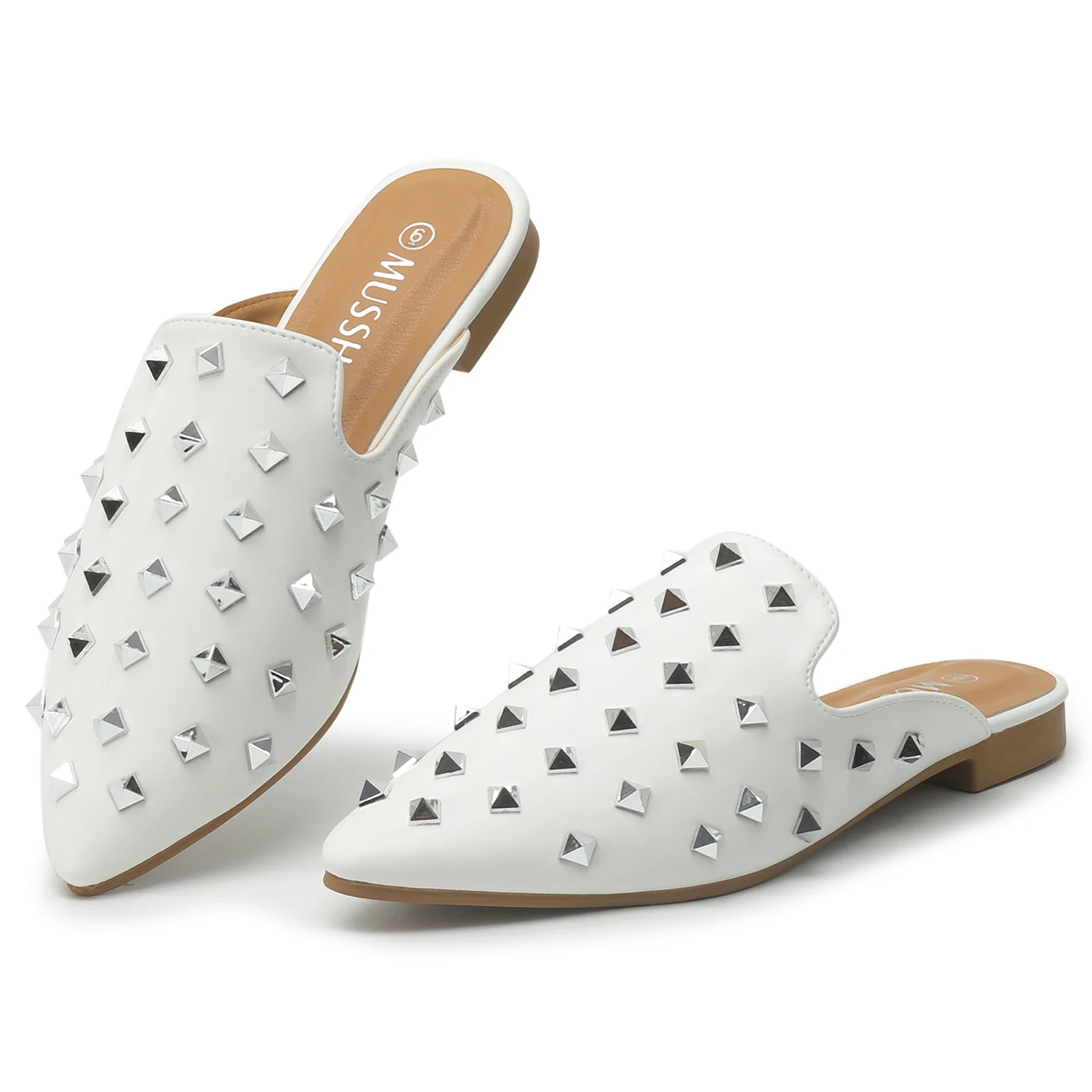
While wedge heel loafers offer numerous benefits, they’re not universally ideal for everyone. Consider these factors when determining if they’re right for your needs:
Foot Type Considerations:
– High arches may benefit from the added support and shock absorption
– Flat feet might appreciate the stability and arch support
– Wide feet should look specifically for brands offering wider widths
– Bunions or hammertoes require styles with adequate toe box space
Activity Level Factors:
– Appropriate for: Office work, casual outings, light walking, standing events
– Less suitable for: Extended walking (over 3 miles), athletic activities, uneven terrain
Potential Limitations:
– May not provide sufficient correction for severe overpronation
– Not typically designed for specific medical conditions requiring custom orthotics
– Limited benefit for severe arthritic conditions in the foot and ankle
– May be too unstable for those with significant balance concerns
Before investing in women’s low heel loafers or wedge styles, consider consulting a foot specialist if you have existing foot problems or pain. This is particularly important if you’ve been diagnosed with a specific foot condition or have had foot surgery.
Most people experience an adjustment period when switching to wedge loafers, especially when transitioning from completely flat shoes. Give yourself 1-2 weeks of gradually increased wear time to properly evaluate comfort and fit.
Frequently Asked Questions
Are all wedge loafers considered orthopedic?
No, not all wedge loafers offer orthopedic benefits. The orthopedic value depends on specific design features like proper arch support, cushioning, and foot-friendly dimensions. Quality materials and construction also significantly impact the supportive properties.
What is the ideal heel height for orthopedic benefits?
Most foot specialists recommend wedge heels between 1-2 inches (2.5-5 cm) for optimal orthopedic benefits. This height provides some elevation without placing excessive pressure on the forefoot or dramatically altering natural gait patterns.
Can wedge heel loafers accommodate custom orthotics?
Some can, but not all. Look for styles with removable insoles that create sufficient depth to accommodate custom orthotics without making the shoe too tight across the top of the foot.
How long should I expect my orthopedic wedge loafers to last?
Quality wedge loafers with orthopedic features typically last 1-2 years with regular wear before the supportive elements begin to compress and lose effectiveness. The upper materials may last longer, but the supportive components often deteriorate first.
Are wedge heel loafers suitable for all-day wear?
For many people, properly fitted orthopedic wedge loafers are comfortable for all-day wear. However, even the most supportive shoes benefit from alternation, and giving your feet varied support throughout the week is ideal.
Can wedge heel loafers help with existing foot pain?
They may help with mild to moderate foot discomfort, particularly issues related to pressure distribution or lack of arch support. However, acute pain should always be evaluated by a healthcare provider before attempting self-treatment through footwear changes.
How do I know if my wedge loafers provide adequate support?
Quality supportive wedge loafers should feel comfortable immediately, cradle your heel securely, support your arch, and allow your toes to spread naturally. You shouldn’t feel any specific pressure points, and your foot shouldn’t slide forward excessively when walking.
At Artisan Haul, we understand that the perfect wedge heel loafer balances sophisticated style with genuine comfort. Our curated selection prioritizes designs that protect foot health while elevating your personal style—because comfort and fashion should never be mutually exclusive.

